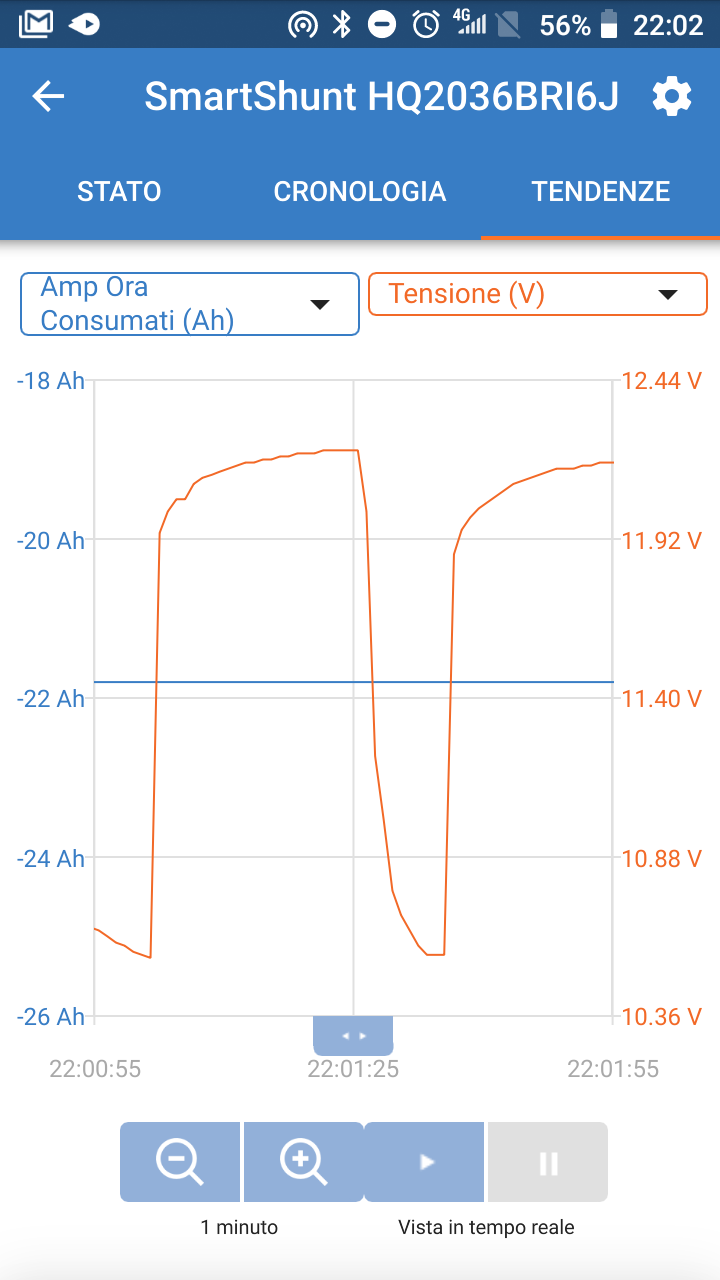Good evening, this is the story of my Agm battery for cyclic use.
We have been living in a camper for almost 3 years.
The battery is almost exhausted.
I mean, with loads of 2/4 amps it is still good.
But with a load of 15 amperes (C 0.15), it only returns 25/30 ah.
I took a test with the recently purchased victronenergy smartshunt.
Is this normal after just 2 years and 8 months of continuous daily use?
The battery has about 1000 light cycles.
It discharges daily at approximately 12.5 / 12.6v.
He only suffered 3 or 4 deep discharges.
It is always charged at 100% every day, from a 300watt panel with a 30 amper mppt regulator.
The charge is set as follows:
- maximum current phase
- absorption phase of 90 or 120 minutes at 14.5v
- floating phase at 13.7 / 13.8v.
- temperature compensation at -3mV / C / 2V (about -18mV / C)
The working temperature has always been between 15 and 30 degrees. So very good.
The charging parameters are correct right?
On the battery it is written to charge at 14.7 / 14.9v in cyclic use and 13.8v in buffer use.
But my cyclic use is very light, almost a buffer use.
So I decided that 14.9v is too much.
Also I have seen that charging at 14.5v, the tail current is reached at the same time as at 14.9v.
In few words, monitoring the absorbed amps, I noticed that 14.5v equals 14.9v.
So I preferred 14.5v because it generates less gas.
The battery is designed for 1000/1200 discharge cycles (70%).
It actually has less than 1000 cycles at 80% now.

